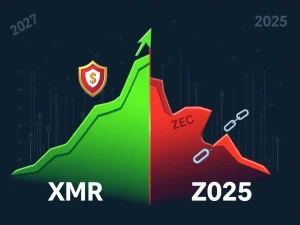Bitcoin Price Surge: Why Pro Traders Remain Cautious Despite Rally

Bitcoin recently saw a significant move upward, pushing its Bitcoin price closer to previous all-time highs. This rally has captured attention across the crypto community. However, a deeper look at the underlying derivatives data and broader market analysis reveals that not all participants are fully convinced, particularly experienced pro traders.
Understanding the Bitcoin Price Rally
Bitcoin’s climb above $109,000 followed a brief dip to test the $105,200 support level. Several factors potentially contributed to this upward movement:
- Data indicating monetary expansion in the eurozone.
- Signs of potential weakness in the United States labor market.
- General market sentiment potentially reacting to macroeconomic shifts.
Despite trading near its peak value, the enthusiasm seen in the spot market isn’t fully reflected in how pro traders are positioning themselves, leading to questions about the rally’s sustainability.
Why Derivatives Data Suggests Caution Among Pro Traders
Looking at the derivatives data provides crucial insights into the sentiment of leveraged traders. One key indicator is the Bitcoin futures premium.
The annualized premium on Bitcoin 1-month futures has remained below the neutral 5% threshold. While it saw a slight increase from 4%, it hasn’t decisively entered bullish territory since June 11. This indicates that pro traders are not aggressively taking leveraged long positions, a common sign of strong conviction in a rally.
Global Economy and Trade Tensions Weighing on Sentiment?
The current global economy landscape might be influencing the cautious stance. Recent data showed a 2.7% year-over-year expansion in the eurozone’s broad money supply (M2) in April, aligning with expansionary trends elsewhere. Conversely, US private payrolls reportedly fell in June.
Some analysts argue that the subdued demand for leveraged long Bitcoin positions is linked to heightened economic recession risks, particularly amidst escalating global trade disputes. Threats of increased import tariffs and calls for tougher negotiation stances from major economic blocs introduce significant uncertainty into the global economy, which can impact risk appetite across all markets, including crypto.
Neutral Options Market and Weak Stablecoin Demand
Beyond futures, the options market also reflects a lack of strong bullish conviction. The 25% delta skew for Bitcoin 1-month options currently sits at 0%. This metric measures the cost difference between put (sell) and call (buy) options. A neutral 0% skew suggests traders perceive balanced risks for both upward and downward price movements, rather than anticipating a significant surge.
Furthermore, demand indicators in key markets like China show weakness. The Tether (USDT) discount relative to the official US dollar exchange rate in China has deepened to about 1%. This discount often signals investors cashing out of crypto, reflecting reduced demand and potentially concerns about the Bitcoin price rally’s durability, possibly amplified by trade war fears.
Market Analysis Highlights Outflows and Uncertainty
Adding to the cautious sentiment, recent market analysis noted significant outflows from spot Bitcoin exchange-traded funds (ETFs). Tuesday alone saw $342 million in net outflows. ETF flows are often seen as an indicator of institutional or larger investor sentiment.
Combined with the signals from derivatives data and stablecoin premiums, these outflows paint a picture where, despite the spot Bitcoin price movement, underlying demand and conviction from experienced participants and institutions appear muted. The prevailing macroeconomic uncertainty, particularly regarding the global economy and trade tensions, seems to be fostering a wait-and-see approach among many pro traders.
Summary: A Rally Lacking Full Conviction
While the Bitcoin price has shown resilience and rallied towards previous highs, a comprehensive market analysis suggests the rally may be built on less solid ground than pure price action implies. Key derivatives data, including futures premiums and options skew, indicate that pro traders are not yet fully committed to a bullish trend. This caution is likely influenced by concerns about the global economy, trade tensions, and reflected in weak stablecoin demand in China and recent ETF outflows. Investors are advised to consider these underlying indicators alongside the headline price movements when assessing the market’s true strength.









